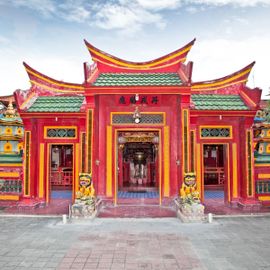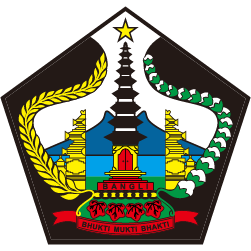Bali has a variety of traditions carried out by the community. These traditions attract local and foreign tourists. One of the traditions carried out and found in every corner of the island of Bali is Canang Sari. Canang Sari is a form of offering. If you go on holiday to Bali, you can find it almost everywhere. Based on the beliefs of the Balinese, especially those who embrace Hinduism, the purpose of Canang Sari is to create a balance between God, man, and the universe.
Usually, Canang Sari is square shaped. The size is small around 15 x 15 centimeters. The box of Banten or Canang Sari is made from very young coconut leaves. The yellowish-white coconut leaves are woven, so that they can become a box-shaped called ‘ceper’, and then it’s filled with Canang Sari.
In Kawi language, Canang comes from the word 'Ca' which means beautiful and 'Nang' means purpose. Then Canang can be interpreted as a means to invoke beauty from Ida Sang Hyang Widhi Wasa. There are various kinds of Canang. Based on its use, Canang is divided into Canang Genten, Canang Burat Wangi, Canang Sari, Canang Meraka and others.
Canang Sari has several sections, including the following.
- Canang Ceper, which is a small offering of young coconut leaves. This offering means 'body' or is called Angga-Satria because it is used as a container.
- Wija or Rice symbolizes Sang Hyang Atma or the spirit that gives life to the universe. Wija is the symbol of the 'seed' in the early life of Ida Sang Hyang Widi Wasa.
- Porosan, usually made from betel leaves, gambir, and lime symbolizing Tri Premana. Tri Premana consists of thoughts, speech, and actions that are similar to the Trimurti concept. Porosan can be interpreted as a human being who must have love, mercy, and gratitude to God.
- Jajan, in the form of sugar cane and bananas, which means the power of Upetti, Sitti, and Pralinan in universal life.
- Sampian Uras, in the form of a circular series consisting of eight segments, is the symbol of the wheel of life with eight characteristics accompanying human life.
- Flowers symbolize peace and tranquility. The flower arrangement is sorted by color and meaning. White flowers are arranged facing east and symbolize the power of Sang Hyang Iswara. Red flowers are placed facing south as a symbol of the power of Sang Hyang Brahma. Yellow flowers are placed facing west to symbolize the power of the Great Lord. The power of Sang Hyang Vishnu is symbolized by the blue and green flowers that are placed facing north.
- Kembang Rampai is placed on a flower arrangement to symbolize wisdom. Some flowers have a fragrant aroma, while some of them aren’t. It also symbolizes the dynamics of difficult and happy life.
- Lepa or boreh miyik symbolizes good attitude and behavior.
- Fragrant oil is used to symbolize peace of mind and self-control.
The tradition in Bali is indeed quite rich. For example, Canang Sari symbolizes various aspects of life. Every important ceremony or day also has a different type of Canang. Canang Sari is made for daily offerings. Whereas Canang Pengengkeb and Canang Genten have special functions. Canang Pengengkeb is used for Gong, Gambang, Gender, Angklung, Wayang, Barong, Mask, and other sacred dances during piodalan. And, Canang Genten functions as a means of asking for grace or kayowanan. So the Canang is used during the Sewala Church Ceremony, tooth-cutting ceremonies, and marriage ceremonies.
It’s easy to make Canang Sari for daily needs. First of all, you need to make a Ceper and its contents, such as jajan Bali, potpourri, frangipani flowers, gemitir flowers, pacar putih flowers, pacar ungu, pacar merah, sugar cane, sampian uras, lepa, and perfume. The fields are arranged according to the direction of the compass. While the base of the Ceper is in a for of circle decoration.
After knowing the meaning and function of a small square box called Canang Sari, don't ever step on or step over it. Since the object has a religious meaning for the Balinese, we must respect it.



















